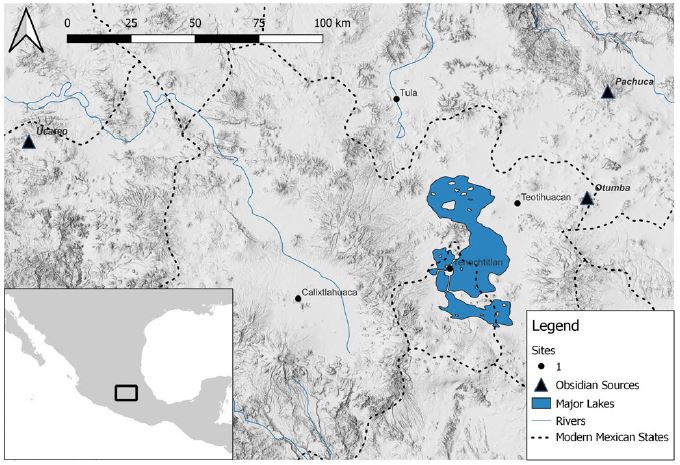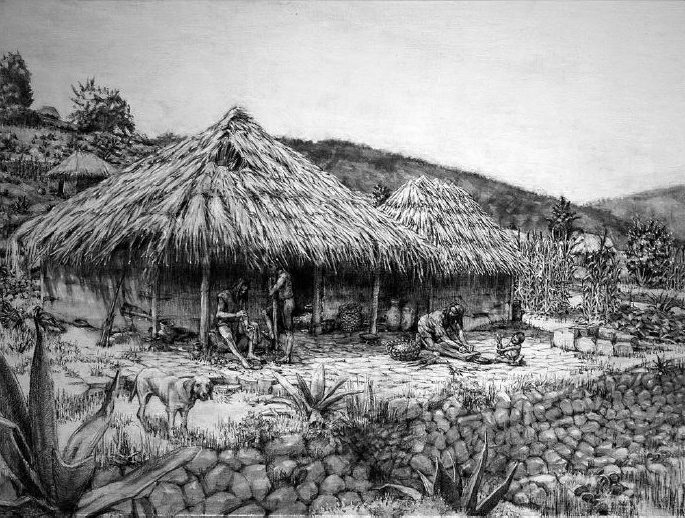Above: Artist’s reconstruction of biface flaking at a Postclassic Calixtlahuacan household. Illustration by Michael Stasinos.
A warm congratulations to Dr. Angela Huster for co-authoring a paper recently published in Ancient Mesoamerica!
In this paper, Dr. Huster along with Drs. Bradford W. Andrews and Michael E. Smith analyze flaked stone tools recovered from households in the Postclassic central Mexican city of Calixtlahuaca. The artifacts are mostly obsidian and represent a combination of blade-core technology, biface, and bipolar characteristics, with blade-core types being the most common. The analysis suggests something surprising: that although residents engaged in limited biface and bipolar reduction, the city did not, in fact, have any resident blade producers. This runs contrary to the understanding of most archaeologists, who typically conceptualize craft production as directly leading to the existence of complex Mesoamerican urban centers.

Drs. Andrews, Huster, and Smith then explore possible ways Calixtlahuacans obtained their flaked stone tools without resident blade producers within the city, including whole- and processed-blade trade and itinerant craftsmen. Developing a further understanding of this cultural aspect carries important implications for the comparative understanding of the organization and scale of economic provisioning systems in Postclassic central Mexico.
Congratulations to Dr. Huster on this great achievement, which adds an intriguing thread to existing research on the Postclassic period of Mesoamerican archaeology!

